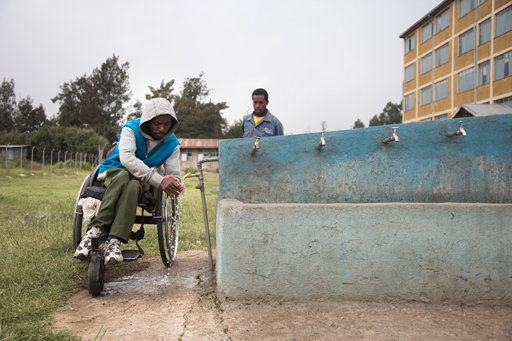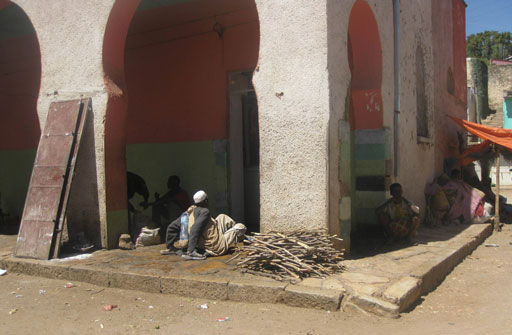1.3 Equity and inclusion in urban WASH
This section examines the challenges of ensuring equitable access to WASH services for all groups within urban communities.
The terms equality and equity may appear to mean the same thing. However, equality of service means that everyone gets equal amounts of services regardless of need, whereas equity of service refers to services allocated according to need, which is more fair and just, as illustrated in Figure 1.5.

Urban communities consist of diverse groups of people and all need access to WASH services. However, depending on their age, lifestyle, nature of their daily work, and/or physical condition, these groups require different levels of service. Some in the community, referred to as vulnerable groups, have particularly special needs and are most affected by the lack of WASH services, for example:
- children and the elderly
- people living with HIV/AIDS
- people with disabilities (of any age)
- poor families with little or no income.
Children, especially those under five years of age, are more likely to die of diarrhoea caused by lack of clean water. Disabled people may not easily access and use conventionally built latrines because of steps or rough and uneven ground. This not only limits their ability to practise safe sanitation but also makes them socially marginalised.
To ensure equity, stakeholders should consider these vulnerable individuals, and devise means to ensure that their needs are identified and addressed. Inclusion refers to the process of incorporating the needs of vulnerable groups. Inclusive programmes or projects ensure that WASH service environments are accessible to everyone, as shown in Figure 1.6.

Disabled students who use wheelchairs require special access to latrines in schools. If ramps are not in place, these students either avoid using the facility or struggle to use it despite uneven and often unsanitary floors. The health risk to disabled students can be significantly increased by lack of ramps. The situation is the same in public latrines that serve market centres.
It is also important to think about disabled people without mobility aids (Figure 1.7). Many disabled people are poor and do not have access to mobility aids such as wheelchairs. Where possible, local solutions developed in consultation with the users can assist them to access the WASH facilities more easily and safely.

1.2.3 Challenges related to governance
